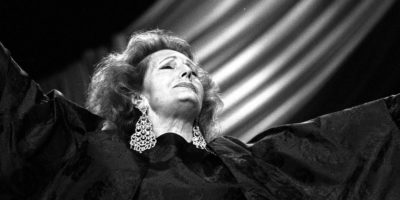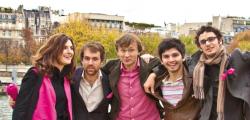
Nelson Mandela. Photo By Awake MZANTSI – Wikimedia Commons
Top 10 Facts about Nelson Mandela and The Apartheid
Nelson Rolihlahla Mandela was the first black president of South Africa. He is a symbol of black resistance and was an apartheid anti-activist. He was also a descendant of the South African royal family called the Thembu.
Nelson was born in Mvezo, South Africa, in 1918. He was exposed to leadership roles since birth as his father, Gadla Henry Mphakanyiswa, was the chief and councilor to the King of Thembu Kingdom.
During his teenage years, Mandela took a particular interest in African History. He was drawn and influenced by anti-imperialist chiefs who often paid visits to his school, narrating tales of their experiences as political leaders.
History shows that Mandela was a victim of racial discrimination from a very young age. While attending his tertiary education in Johannesburg, he was a frequent target for others since he was the only colored student in his class. Through this experience, he began actively participating in radical political campaigns and rallies.
After fully joining politics, Nelson spearheaded several protests and campaigns in the hopes of eradicating apartheid, a segregation policy formulated in 1948 under the National Party.
Read about the consequences of apartheid in South Africa here.
1. Nelson Mandela Was Co-Founder of A Black Nationalist Youth League

Board of the African National Congress. Photo By Rob Koster –Wikimedia Commons
Mandela joined the African National Congress (ANC) in 1943. ANC was a socio-democratic political party that aimed at attaining racial equality in South Africa.
In his time at ANC, Nelson built strong bonds with Oliver Tambo, Jordan Ngubane, and Walter Sisulu, all of whom were activists in the ANC. Mandela identified the need for an organization to mobilize the youth in opposition to the ruling party. Together, they formed the ANC Youth League in 1944.
2. He Was Denied His University Degree Due to His Political Life

Graduation Caps. Photo By Andrea1597 – Pixabay
Nelson’s first university was the University College of Fort Hare. He had joined the school hoping to become a lawyer but was later expelled due to his involvement in student protests.
After joining the ANC, Mandela decided to continue pursuing an education. He sought financial aid from the Bantu Welfare Trust and became a full-time student.
After the 1948 elections, South Africa was under the open racialist National Party (N.P.) rule. Mandela and his fellow activist devoted their time to organizing and participating in boycotts and strikes. He could not juggle schoolwork and politics, and after failing his final exams three times, Mandela was eventually denied his degree.
3. Nelson Mandela Was Accused Of Treason
In 1960, a splinter group of the ANC party launched a protest in Sharpeville, Vereeniging. The protest had gathered around 20,000 people, and the local police saw this as a threat. Some say the protest was peaceful, while others said the crowd was tossing stones at the police.
The protest quickly turned into a bloodbath when reinforcement was called in. The police opened fire, killing a total of 69 citizens. Over 100 people were left injured and paralyzed.
The aftermath of the Sharpeville massacre angered the blacks and marked the beginning of riots and strikes countrywide. On 30th March 1960, the government declared a state of emergency, and 156 citizens, including Nelson Mandela, were arrested and charged with treason.
The state of emergency was lifted five months later, and in 1961, all the defendants were acquitted.
4. He Formed A Military Branch of the ANC To Protest Against The Government
After his release from prison, Mandela opted for a different protest approach. He was convinced that a violence-led campaign would be the game changer of South Africa’s apartheid and white minority rule.
Nelson and Sisulu formed the Umkhonto we Sizwe (M.K.), a military branch of the ANC. He fled to Angola in 1962, where he led the military training of members of the M.K.
5. Nelson Mandela’s Conspiracy Against The Government Earned Him A Life Sentence

Prison Cell. Photo By Ichigo121212 – Pixabay
In February 1962, Nelson left South Africa secretly to represent ANC as a delegate in Ethiopia. He travelled to Tunisia, Guinea, and Liberia, where the countries’ heads of state gave him monetary funds for weaponry.
On his trip to London, Mandela met with prominent politicians and anti-apartheid activists. In August that same year, Mandela was arrested for incitement and leaving South Africa without permission. Later that year, he was also charged with conspiracy to overthrow the government.
Mandela was found guilty of all his charges and sentenced to life imprisonment. He served his sentence in Robben Island and was later transferred to Pollsmoor Prison in 1982.
6. His Imprisonment Drew International Recognition On The Unjust Apartheid Policies
During his M.K. trial at the Pretoria Supreme Court, Nelson gave his legendary ‘I am prepared to die’ speech. The 3-hour speech garnered attention from the press and eventually brought massive attention from international bodies and countries. Organizations such as the World Peace Council and the United Nations fully supported Mandela’s release from prison.
Read more on the facts about the movement against apartheid in South Africa here.
7. Nelson Mandela’s Eyesight Was Permanently Damaged During His Time In Prison
Mandela received harsh treatment on Robben Island. The guards were physically and verbally abusive and gave little to no regard to prisoners’ requests.
As an inmate, Mandela spent his days working in a lime quarry, breaking rocks into gravel. The prison wardens did not offer protective gear, and the glare from the lime caused irreversible damage to Nelson’s eyesight.
8. His Release From Prison Was Due To International Pressure
Nelson’s incarceration had a big impact on the economy of South Africa. The country had stopped receiving funds from the U.K. and the U.S. Other countries completely cut trading ties with South Africa.
The country’s economy was suffering gravely, which drove then-President Pieter Botha to ease off some apartheid policies. His efforts were futile and eventually led to his resignation. F.W. de Klerk took over the presidency in 1990 and ordered the release of Mandela.
9. Nelson Was Awarded The Nobel Peace Prize For His Effort Against Apartheid

F.W. de Klerk, left, the last president of apartheid-era South Africa, and Nelson Mandela, his successor, wait to speak in Philadelphia in 1993. Photo By Carol M. Highsmith – Wikimedia Commons
F.W.de Klerk and Mandela’s efforts towards eradicating racial discrimination were impactful on the people of South Africa. The two worked hand in hand with the elected government of 1994 to a draw up new constitution.
The constitution’s values were based on human dignity, equality, human rights advancement, non-racialism, and non-sexism. Mandela and F.W Klerk were recognized and awarded the Nobel Peace Prize in 1993.
10. Nelson Mandela Abolished All Apartheid Policies During His Presidency
Nelson was elected the president of South Africa in 1994 under the ANC Party. In 1996, Mandela promulgated the constitution that was drawn up in 1994. It established a central government that represented the rights of minorities and emphasized the freedom of expression.
Read more on the history of the apartheid in the 10 amazing facts about the Apartheid Museum.
Nelson Mandela died in December 2013. His statues are found in numerous places, including Pretoria’s Union Buildings, London’s Parliament, United Nations Headquarters in New York, The Hague, and The South African Embassy in Washington, DC.

Statues of Nelson Mandela, Omniversum, Sculptures in The Hague. Photo By Qwertzu111111 – Wikimedia Commons
Mandela is commemorated in numerous films, books, public murals, and songs. The United Nations General Assembly marked his birthday as ‘Mandela Day’. He will forever be remembered as Africa’s greatest freedom symbol.
Planning a trip to Paris ? Get ready !
These are Amazon’s best-selling travel products that you may need for coming to Paris.
Bookstore
- The best travel book : Rick Steves – Paris 2023 – Learn more here
- Fodor’s Paris 2024 – Learn more here
Travel Gear
- Venture Pal Lightweight Backpack – Learn more here
- Samsonite Winfield 2 28″ Luggage – Learn more here
- Swig Savvy’s Stainless Steel Insulated Water Bottle – Learn more here
Check Amazon’s best-seller list for the most popular travel accessories. We sometimes read this list just to find out what new travel products people are buying.









